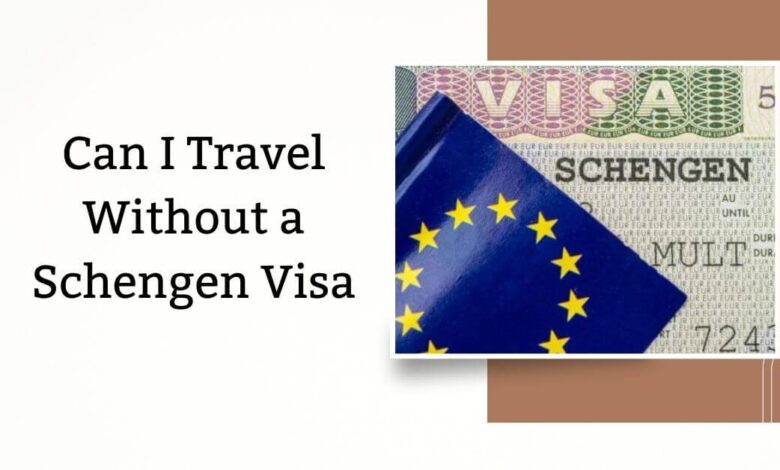Can I Travel Without a Schengen Visa 2026

A lot of people want to travel to Europe, but getting the right visa can be rough at times. There are other choices for people who want to travel around Europe but don’t have a Schengen visa. This piece will talk about a number of ways you can visit Europe without a Schengen visa, which will make your trip easier and more enjoyable.
Can I Travel Without a Schengen Visa
No, you can’t go anywhere without a Schengen ticket. With a valid U.S. passport, you can stay for up to 90 days for work or pleasure every 180 days. Watch out not to stay too long! You have to wait an extra 90 days before you can enter the Schengen area again. You will need a visa if you want to stay longer than 90 days.
Schengen Visa Requirements:
Certain requirements must be met in order to obtain a Schengen visa. These include showing proof of travel insurance, confirmed accommodations, financial stability, and a good reason for visiting. If you can’t get a Schengen visa or just want to skip the process, there are other options you can look into.
Exploring Visa-Free Entry Countries:
Some nationalities can enter a number of European countries without a visa. For instance, people from the US, Canada, Australia, Japan, and many other countries can visit Schengen Area countries without a visa for up to 90 days in a 180-day time. Looking into deals that let people from your country enter European countries without a visa can make traveling easier.
Utilizing Residence Permits:
If you have a long-term visa or a residence pass for a Schengen Area country, you may be able to travel within the Schengen Area without needing an extra visa. This choice is best for students, people living abroad, or people with family in Europe.
Exploring Non-Schengen European Countries:
Europe offers a diverse array of destinations beyond the Schengen Area. Countries such as the United Kingdom, Ireland, Croatia, Romania, Bulgaria, and Cyprus operate outside the Schengen Agreement. Travelers can explore these countries without the need for a Schengen visa, albeit with their respective visa requirements.
Read Also: How Much Does Schengen Visa Cost
Navigating Transit Visas:
Transit visas may be needed for people going through Schengen countries on their way to non-Schengen countries, based on how long and why the stopover is happening. Knowing the requirements for a transit visa and planning your trip around them can help you escape problems that you didn’t expect.
Seeking Specialist Advice:
It can be hard to figure out visa rules, and standards may change depending on your situation. You can get personalized help based on your nationality and travel plans by talking to immigration experts or checking out embassy websites.
Conclusion:
The Schengen visa makes it easy to travel between Schengen member states, but it’s not the only way to see Europe. Without a Schengen visa, tourists can go on amazing trips in Europe by using visa-free entry agreements, and residence permits, visiting non-Schengen countries, and learning about the requirements for transit visas. It’s easy to enjoy Europe’s rich cultural tapestry and beautiful landscapes if you plan ahead and do your study.
Frequently Asked Questions:
Can I travel to Europe without a Schengen visa?
Yes, you can travel to certain European countries without a Schengen visa by taking advantage of visa-free entry agreements, residence permits, or visiting non-Schengen countries.
What is a Schengen visa?
Travelers with a Schengen visa can enter, stay in, and leave the Schengen Area, which is made up of 27 European countries. For many countries, it is needed for stays of up to 90 days in 180 days.




